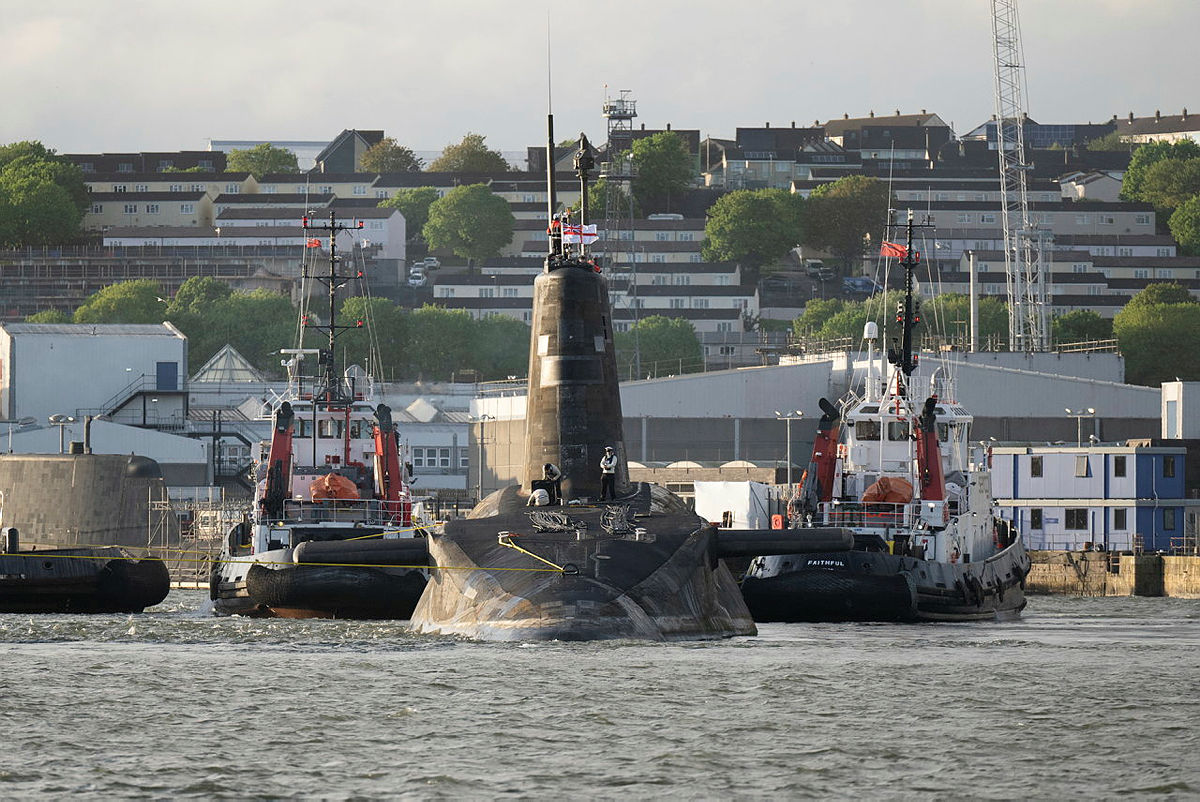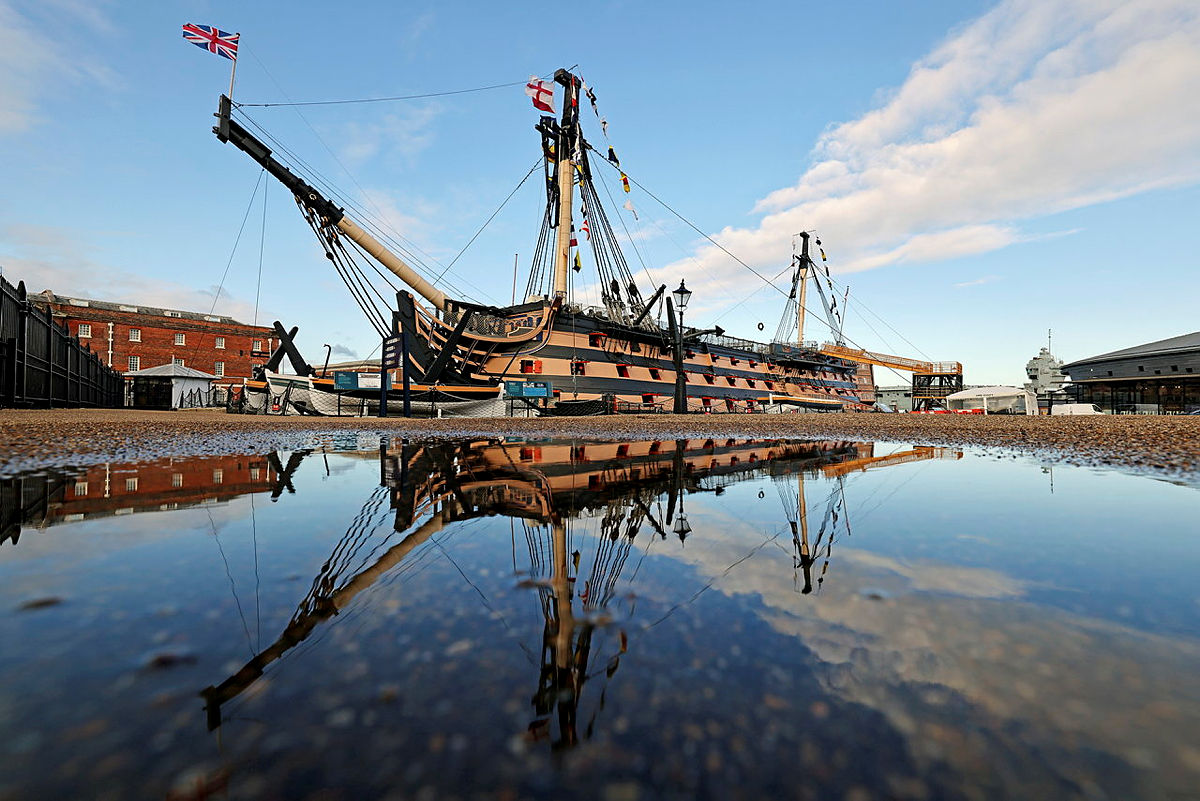
From Jolly Jack Tars to the Wooden Walls: Royal Navy nicknames explained

As the world's oldest and most distinguished naval force, the Royal Navy has had numerous nicknames throughout its history.
Established in the 16th Century, from the days of wooden warships to today's aircraft carriers and nuclear submarines, the Royal Navy has had ample time to gather a collection of monikers.
This article will explore the noble nicknames that have become part of the venerable institution, as well as terms that would have most commonly been used on the lower decks.
The 'Andrew'
According to Paul White, who wrote a book on the origin and history of Royal Navy nicknames, the Andrew is the traditional lower-deck colloquial term for the Royal Navy.
It is one of the most enduring nicknames for the King's Navy with a few opposing theories as to its origins.
The most common theory is that the Royal Navy is named after Lieutenant Andrew Miller, a fervent and fearsome officer in the Impress Service.
The Impress Service, also known as the 'press gang', was a form of forced recruitment when ships were short of crew.
During the Napoleonic Wars, between 1803 and 1815, it was common for groups of sailors to seize men for military service – a form of 19th Century conscription.
The legend goes that Andrew was so successful he was said to have "owned the Royal Navy".
By the 1850s, continuous service was introduced and the need for press gangs died out as more sailors joined the service interested in making the Navy their career.
Andrew Miller is not the only Andrew to have some claim on the Royal Navy moniker.
St Andrew is the patron saint of sailors and fishermen, and another popular theory is that the Navy's nickname is, in fact, an appreciation of Scotland's patron saint.
This theory makes sense, as folks back in the day were more religious and superstitious, but it lacks the gravitas of the Andrew Miller tale, however.
While there isn't any evidence to show that Andrew Miller ever existed, the legend lives on in the waves and sails.
The Senior Service
With roots dating back to the 16th Century, the Royal Navy earned the moniker 'The Senior Service' due to its status as the oldest of the British Armed Forces.
The English Navy became the Royal Navy after the restoration of the monarchy under Charles II in 1660.
As an island nation, the sea played a pivotal role in defending Britain's shores and projecting power across the globe.
The term not only signifies seniority in age but also commands respect.

The Silent Service
As technology advanced, the Royal Navy embraced submarine warfare. The nickname 'The Silent Service' is used for the Royal Navy's submarine fleet and its ability to operate undetected underwater, ensuring covert and strategic operations.
The Submarine Service motto is "Stealth. Endurance. Flexibility", and, according to the Royal Navy website: "These qualities make our Submarine Service the best in the world."
The White Ensign Fleet
This one is pretty self-explanatory and derives its name from the flag flown on the stern of British naval vessels – the White Ensign.
The Royal Navy is united by its motto 'If you wish for peace, prepare for war', and its flag – the White Ensign – which is flown on British ships and shore establishments around the world.
According to Graham Bartram, the UK's Chief Vexillologist (flag expert): "Originally, the Royal Navy didn't just use the White Ensign.
"It used the White Ensign, the Red Ensign and the Blue Ensign because the Navy was divided into three different squadrons. And the squadrons each had their own Admiral, Vice Admiral and Rear Admiral."
The year 1864 was a monumental year for the Royal Navy because it was decided then to drop the squadron system and just use one flag for the entire Royal Navy.
The decision was made that the White Ensign would represent the Royal Navy from then on.

The Jolly Jack Tars
Jack Tar was a common term for sailors in the age of sail.
According to Mr White, the term Jack was a frequently used generic term to refer to a mass of common people.
What sets sailors apart from the 'mass of common people' is the addition of the word tar.
When ships were made of wood, their rigging was made of hemp rope and, while hemp is a durable material, nothing was invulnerable to the salty sea air.
To avoid rot, ropes were soaked in tar which needed to be constantly reapplied.
Sailors wore long hair back in the day, while it would not rot quite like the ropes, it did get caught in them aided by the strong winds on the high seas.
To avoid having a bad hair day, sailors would braid their hair and dip it in tar used to waterproof the ropes and seal the decks.
The tarred pigtails fell out of fashion as a hairstyle at the beginning of the 19th Century and the last officially recorded pigtail in the Royal Navy is in 1827.
In the 17th and 18th Centuries, the fusion of 'Jack' and 'Tar' evolved into the favoured nickname for merchant seafarers and sailors alike.
While the word 'tar' fell out of use, the nickname Jack remains a popular nickname for sailors today.
The Grey Funnel Line
Unlike the Royal Navy, shipping line companies tend to paint their funnels in distinctive colours. For example, Cunard Line, the British shipping and luxury cruise company, paints its funnels red and black.
The Blue Funnel Line, a merchant shipping company that was founded during the heyday of the Royal Navy in 1866, has blue funnels, as the company's name would suggest.
The funnels of His Majesty's Ships are painted plain grey, hence the humorous nickname.

The Wooden Walls
This is a historic nickname, understandably no longer used today because commissioned Royal Navy ships are no longer made from wood.
However, in the age of sail, the Royal Navy was synonymous with imposing wooden warships that stood as bulwarks against invasion.
The nickname 'The Wooden Walls' pays tribute to the vessels that protected Britain's shores and secured its dominance at sea.
There is, however, at least one commissioned ship made from wood still technically serving in the Royal Navy’s arsenal. Laid down in 1759, HMS Victory is the oldest commissioned warship in the world.
During her heyday, she was the most powerful type of ship of her day with three gun decks mounting 100 guns.
She is well looked after in Portsmouth Historic Dockyard and as long as she remains commissioned, it can be argued that the Wooden Walls nickname still applies.









